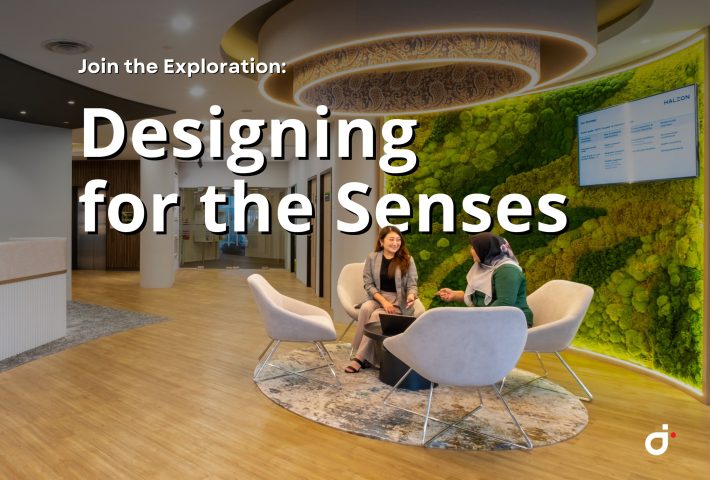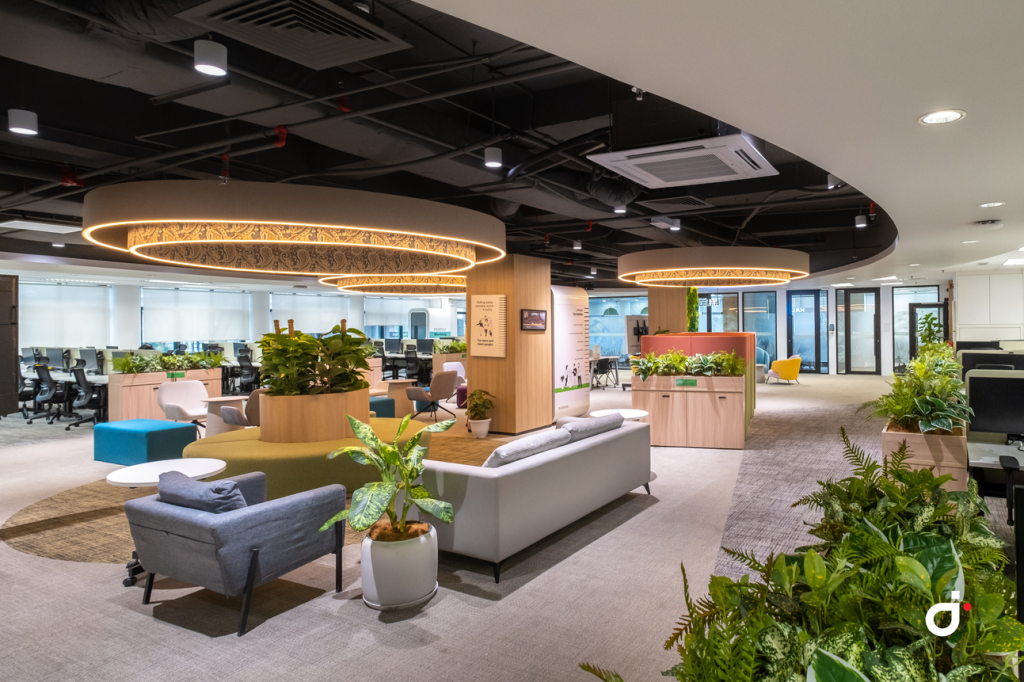Designing for the Senses: Creating Rejuvenating Experiences in the Workplace
November 12, 2025
As the boundaries between work, life, and wellbeing continue to blend, the modern workplace is evolving. It is no longer simply a place to complete tasks but an environment that nurtures the entire human experience.
In this transformation, one insight stands clear: people don’t just occupy space, they experience it through their senses.
That’s why the most innovative workplace designs today focus on sensory strategy, an approach that goes beyond pure functionality to evoke emotion, encourage balance, and promote overall wellbeing. This is not about extravagance. It is about thoughtful, human-centered design.
At the heart of this approach is creating opportunities for physical and emotional renewal. The best workplaces intentionally cultivate environments that help individuals recharge and regain focus.
The Sensory Dimension of Workplace Design
Traditional workplace design often prioritizes efficiency through layouts, adjacencies, and utilization. However, designing with sensory experience in mind adds a vital dimension: how people feel, recharge, and engage with their surroundings.
In our projects, we focus on a different set of questions:
- How can a space provide comfort, not just utility?
- How can it encourage moments of pause, not just productivity?
- How do materials, sounds, scents, and light influence emotional well-being?
Let’s explore how each sense can be thoughtfully integrated into workplace environments.
Sight: Creating Visual Harmony That Eases Cognitive Load
Visual elements influence mood, attention, and stress. In sensory-led design, the goal is to reduce overload and promote calm focus.
Key strategies include:
- Maximizing natural light while managing glare through layered shading that aligns with natural rhythms.
- Using color palettes inspired by nature—soft neutrals, warm earth tones, and muted greens—that soothe the eyes.
- Designing clear, uncluttered visual fields to prevent overstimulation and visual fatigue.
These design choices help the brain relax, which supports sharper focus and creative thinking.

Sound: Crafting the Acoustic Environment
Noise is a common source of frustration in workplaces. However, sound can also provide comfort and foster connection when thoughtfully managed.
Sensory-aware designs implement:
- Acoustic zoning that balances collaborative areas with quiet spaces for concentration.
- Gentle ambient sounds such as nature-inspired tones or low-frequency hums that help mask distractions without becoming intrusive.
- Use of sound-absorbing materials and furniture to create pockets of privacy, even in open-plan settings.
With this approach, sound is composed intentionally rather than merely controlled.
Touch: Encouraging Comfort Through Materials and Texture
People experience environments physically, through texture, temperature, and surface feel.
Designing for touch involves selecting:
- Natural, inviting materials like warm wood, soft fabrics, and matte finishes that encourage physical comfort.
- Furniture with varied textures; smooth, plush, firm, to support different activities, whether pausing, interacting, or focusing.
- Intuitive, comfortable controls, from door handles to lighting switches, that enhance the tactile experience.
Physical ease fosters emotional comfort, which in turn supports presence and productivity.
Scent: A Subtle Layer of Atmosphere and Memory
Scent is closely linked to emotion and memory, yet it is often overlooked in workplace design. When incorporated thoughtfully, scent adds a powerful dimension to spatial identity.
Examples include:
- Soft botanical scents at entrances that create a welcoming atmosphere.
- Seasonal scent variations reflecting natural cycles to provide familiarity and grounding.
- Neutral or unscented zones to accommodate sensitivities and ensure accessibility.
Scent is less about fragrance and more about creating an immersive atmosphere.

Renewal as a Design Principle
Optimal workplace performance follows a natural rhythm that includes intentional pauses. Supporting renewal is not only about physical breaks but about integrating sensory pauses throughout the workday.
When workplaces support this process through lighting, materials, acoustics, and spatial flow, they become environments that encourage recovery and balance rather than constant effort. They offer a harmony between stimulation and calm, pace and pause.
This is where design truly transforms experience.
Conclusion: Crafting Workplaces That Feel as Good as They Work
By purposefully designing environments that engage the senses, we create spaces that perform exceptionally while feeling right. Spaces that energize, soothe, and renew recognizing the subtle signals people respond to, even if those responses are subconscious.
This is the future of workplace design: intentional, sensory-driven, and deeply human.



